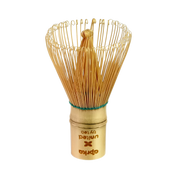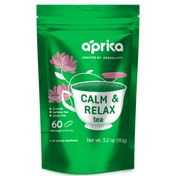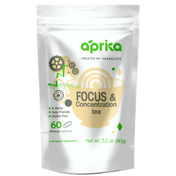Matcha tea, matcha donuts, matcha lattes, matcha smoothies, matcha ice cream — the world of matcha is both fascinating and indulgent. But do you know what matcha actually is? Whether you're planning to swap your everyday beverage for matcha or are a café owner eager to introduce a new range of exquisite matcha dishes, this blog will dive deep into the vibrant green powder that's capturing everyone's attention.
Matcha and the Way of Tea
Matcha is a traditional Japanese beverage with a centuries-old history. More than just a drink, matcha has played a pivotal role in shaping Japanese culture and spirituality. At the core of this connection is the Japanese tea ceremony, known as "The Way of Tea" (Sadō or Chadō). This ritual transforms the simple act of preparing and serving matcha into an art form.
The ceremony is guided by four fundamental principles: harmony, respect, purity, and tranquility. These values permeate every aspect of the practice, from the host's precise and deliberate movements to the soothing atmosphere of the tea room. The experience encourages mindfulness and presence, inviting participants to appreciate the beauty in simplicity and cultivate a sense of connection.
This mindful ritual of preparing matcha has captivated people around the globe, turning it into a beloved morning tradition. Beyond its distinct flavor and abundant health benefits, the traditional process of making matcha provides a peaceful, intentional moment — a perfect way to start your day with calm and focus.
From Shade-Grown Leaves to Vibrant Green Powder
The journey from the tea plant to your favorite matcha powder is a process that begins with shade-grown tea leaves. Several weeks before harvest, these plants are shielded from direct sunlight using coverings like bamboo mats or reed screens. This crucial step increases chlorophyll production, giving matcha its unique, striking matcha color, and enhances its amino acid content, particularly L-theanine, which promotes a state of calm alertness.
Only the youngest, most tender leaves at the top of the plant are selected for harvest, ensuring the highest quality matcha. Once harvested, the leaves are quickly steamed to prevent oxidation and preserve their vibrant green color and antioxidant properties. After steaming, the leaves are air-dried and thoroughly de-stemmed and de-veined, a process that removes any tough or fibrous parts, leaving only the tender leaf material.
The final step in creating matcha is the grinding process. Traditionally, this involves using granite stone mills, a slow and labor-intensive method that produces an ultra-fine, smooth powder. Although some modern producers employ specialized machinery to increase efficiency, the objective remains the same: to create a matcha powder with a remarkable texture and vibrant color, ready to be whisked into a creamy, earthy beverage or incorporated into culinary creations.
The Difference Between Matcha Tea and Green Tea
Isn't matcha organic tea just another type of green tea? While both originate from the Camellia sinensis plant — the same source for black tea, white tea, and oolong tea leaves — their differences lie in the processing and parts of the leaf used. Traditional green teas are typically made from entire leaves, whereas matcha involves removing the stems and veins, leaving only the pure leaf material. This meticulous process dramatically influences matcha's flavor and aroma, resulting in a rich, earthy flavor profile with nuanced sweetness and bitter flavor.
Matcha tea powder also outshines regular green tea in nutrient density. Its vitamin and antioxidant concentrations are significantly higher — you'd need to drink about three cups of green tea to match the antioxidant content of a single cup of matcha. Beyond this, matcha offers 130 times more calcium and 172 times more protein than its green tea counterpart, making it a powerhouse for health benefits.
Making Your Favorite Matcha Recipes at Home
Preparing matcha green tea at home is quick and easy. The first step is choosing the suitable grade of Japanese matcha for your recipe. Not sure which to pick? Check out our blog on (Ceremonial Grade vs. Culinary Grade Matcha) for helpful insights. Different grades of matcha can significantly influence the flavor and texture of your tea, so it's worth considering carefully.
Ready to get started? Let's begin!
How to Make Usucha Matcha Tea (Thin Tea):
- Preheat your matcha bowl: Pour hot water into the bowl, swirl it around to warm the sides, then discard the water.
- Add 1-1.5 teaspoons of matcha powder to the warmed bowl. Carefully pour 2-3 ounces of warm water (175°F or 80°C) over the matcha powder.
- Using your bamboo whisk, whisk the matcha and water together in a zig-zag motion until a frothy layer forms on the surface.
Remember: Making usucha is an art that takes practice. Adjust your Japanese matcha powder and water quantities to find your perfect balance and preferred taste. Enjoy your cup of matcha by taking small sips!
How to Make Koicha Matcha Tea (Thick Tea):
Ingredients:
- 2-4 tsp high-quality ceremonial-grade matcha
- 1-2 oz (30-60 ml) hot water (175°F / 80°C)
Equipment:
- Matcha bowl
- Bamboo Matcha whisk (Chasen)
- Fine mesh sifter
Instructions:
- Preheat your matcha bowl: Pour hot water into the bowl, swirl it around to warm the sides, then discard the water.
- Sift the matcha powder: Place 2-4 teaspoons of matcha powder into a fine mesh sifter over the warmed bowl. Gently sift to remove any clumps and ensure a smooth texture.
- Slowly pour 1-2 ounces of warm water (175°F or 80°C) over the sifted matcha powder.
- Mix the matcha and water slowly in a gentle, circular motion using the bamboo tea whisk. Unlike Usucha, Koicha does not require vigorous whisking. The goal is to create a thick, smooth, and glossy consistency without froth.
Once fully blended, your Koicha is ready to enjoy. Drink it slowly to appreciate its rich, concentrated flavor.
Note: Koicha matcha tea has a bold, velvety texture and a more intense umami flavor than Usucha. It's traditionally used in Japanese tea ceremonies and pairs beautifully with traditional Japanese sweets.
How to Make a Matcha Latte:
Prepare the Matcha
- Sift one teaspoon of matcha powder into a bowl or mug to avoid clumps.
- Add two ounces of hot water (175°F/80°C).
- Whisk the matcha using a bamboo whisk (Chasen) in a zig-zag motion until frothy and smooth.
- Warm 6-8 ounces of your chosen milk in a saucepan or microwave. Avoid boiling.
- Froth the milk using a frother or whisk to create a creamy texture.
- Pour the frothed milk over the prepared matcha.
- Add your desired sweetener, such as honey, sugar, or syrup. Mix gently.
Cold Latte Option:
- Sift one teaspoon of matcha powder into a bowl or cup to avoid clumps.
- Add 2 ounces of hot water (175°F/80°C).
- Whisk the matcha with a bamboo whisk (chasen) in a zig-zag motion until fully dissolved and frothy.
- Fill a glass with ice cubes.
- Pour the matcha over the ice.
- Pour 6-8 ounces of cold milk over the matcha.
- Add your desired sweetener, such as simple syrup, honey, or agave. Stir well.
Add the ingredients and a handful of ice to a jar for an iced matcha latte. Cover and shake vigorously until well combined.
Tips for the Perfect Latte
Water Temperature: Keep the water between 160–180°F to avoid a bitter, burnt taste. A good tip is to let your kettle boil and cool for a few minutes before adding it to the matcha powder.
Enjoy your matcha creations!









